Stick Bugs 101: The Amazing World Of Order Phasmida
The Phasmida (Walking Sticks or Stick Insects) as their name implies, are a medium sized order of insects most of which look like sticks or leaves.
There are around 2,700 known species, most of which come from the tropics. Though there are three New Zealand species currently living in England and about 20 European species.
They are popular in many parts of the world as pets (see keeping pet stick insects) and there is a society of people, The Phasmid Study Group dedicated to the studying and keeping of them.
The longest insect in the world is a Stick Insect called Pharnacia kirbyi and many other Stick Insects are among the largest insects in the world i.e. Heteropteryx dilatata.
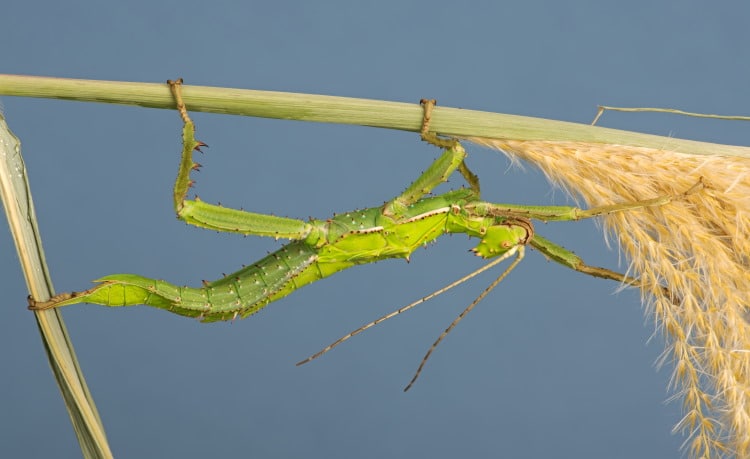
Many species are capable of parthenogenic reproduction (i.e. the ova develop without fertilisation into females only, which can mature and repeat this process), most notably ‘Carausius morosus‘ the ‘Common, Indian or Laboratory Stick-Insect’.
Phasmida are hemimetabolous and generally elongate, though some forms (Leaf-Insects) are broad and flattened. Some forms are apterous (winged), though often only the male flies. They have biting and chewing mouthparts and are all phytophagous (leaf eating).
They all posses compound eyes and some of the winged forms possess 2 ocelli. Their antennae are generally filiform ranging from 8 to over 100 segments and their cerci are short. They are often adorned with numerous spines and other protuberances.
Phasmid Ecology
Stick Bug eggs come in 2 main forms, depending on whether they are dropped on the ground or placed in some less accessible spot. Those that are just dropped to the ground have a relatively large ‘capitulum’, which generally contains lipids and other substances attractive to ants. The ants take the eggs back to their nests, cut off the capitulum (sometimes called an elaiosome) and feed it to their brood; the rest of the egg is then thrown into a garbage dump.
The Stick Insect eggs gain protection from birds and many other predators by being in the ant nest – and hatch quite happily inside the nest or buried in the garbage.
In some species of Stick Insect the newly hatched nymphs are ‘ant mimics’ i.e. Extatosoma tiaratum. This whole process is a remarkable example of plant mimicry on behalf of the Stick Insects, as many plants in similar habitats attach food bodies called ‘eliasomes’ to their seeds in order that ants should take them back to their nests.
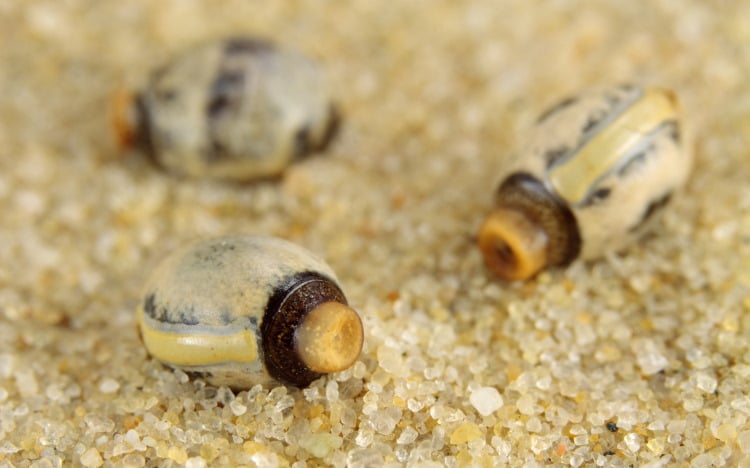
It is known that seeds that germinate inside ant’s nests tend to grow stronger and produce more seeds themselves than seeds of the same plant that germinate away from ants nests.
Apart from protection from predators and parasites, both eggs and seeds in ants nests are offered some degree of dispersal as well as some protection from fire.
Other Strategies
Other species of Stick Insect lay their eggs in the soil (Aretaon asperrimus), into hollow parts of plants (Graeffea crouanii), or glue them to parts of the plant such as leaves or the bark (Timema californica) and these tend to lack the capitulam or have it greatly reduced.
The eggs take anywhere from 3 months to over 18 months to hatch into miniature versions of the adult, except that they have no wings. They are generally active and run around a lot; they climb to the top of, or to the end of, a limb of the nearest vegetation.
Reproductive Biology of Phasmids
Most Stick Insects have 5 larval instars in the male and 6 in the female – and take from about 3 months to over 12 months to reach maturity. The females are generally far larger than the males, except in those species where the males actively compete for females as in Eurycantha calcarata where the males are nearly as big as the females -and Oncotophasma martini where they are slightly bigger.
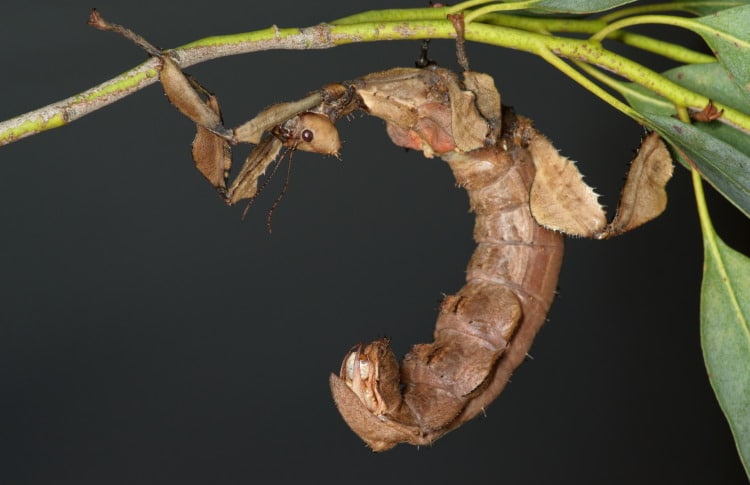
This is because the females produce the eggs, which are relatively large, and she needs a larger abdomen to make them in (and a larger mouth to eat more food) and thus the rest of her body has to be larger too. The males in many species fly and have longer antennae to help them find the females.
In a number of species of Stick Insects, the males guard the females after and some times before mating with them. This is particularly evident in species such as, the American Walking Stick Anisomorpha bupestroides, Anisomorpha monstrosa and The Small Spiney Stick Insect Aretaon asperrimus. Male Small Spiney Sticks will, in captivity at least, guard anything that looks remotely like a female of their species, such as a juvenile female of a different and larger species with which they can not possibly have mated.
The life span of many species is about 1 year, however in many of the larger and slower growing species this may rise to more than two years after hatching.
Predator Evasion in Phasmids
Though most Stick Bugs rely on passive camouflage in order to avoid predators, some of the larger species such as Eurycantha horrida have large spines on their hind legs which can serve as aggressive tools of self defence against predators – as well as in competition with other males.
While the American Walking Stick Anisomorpha bupestroides and to a lesser extent Pink Wings Sipyloidea sipylus, have a defensive chemical spray emitted from a special metathoracic gland. In the case of American Walking Stick Anisomorpha bupestroides this can cause temporary blindness and considerable pain to an adult.
Phasmatodea Taxonomy
Remember, the order Phasmatodea are also known as Phasmida or Phasmatoptera
Order Phasmida
Suborder Anareolatae
- Family: Heteronemiidae
- Family: Phasmatidae
Suborder Areolatae
- Family: Timematidae
- Family: Bacillidae
- Family: Pseudophasmatidae
- Family: Phyllidae
What Next?
Well, I hope this has been an interesting little look at the order phasmida.
Perhaps now you’d be interested to learn a little about the hover flies.
Image Credits:- Cover image – Oreophoetes peruana by Drägüs, License CC BY-SA 3.0

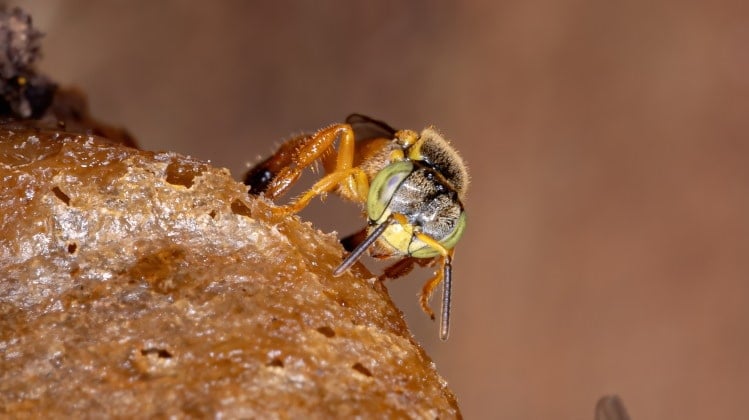


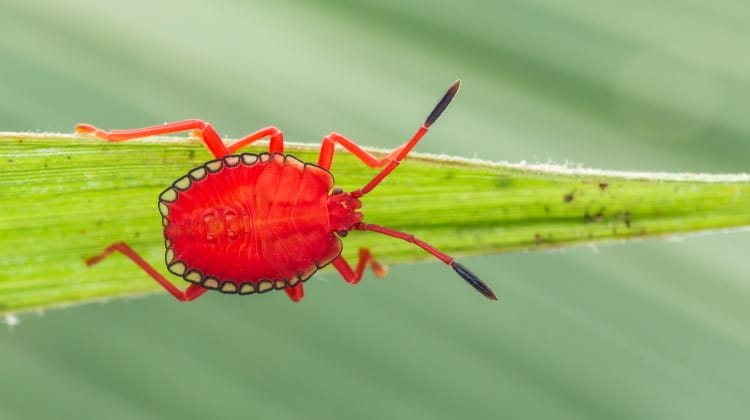
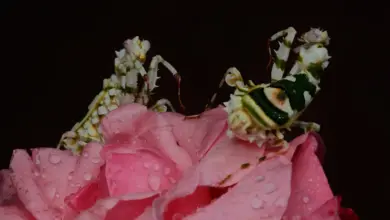
Hey Mr. Ramel, Like most zoologists you are presuming that all people on our planet can understand Latin, as in binomial names. Update: billions of people and students don’t. Why not assign common names that even school kids can understand and learn and remember.. We need everybody in our world to care for animals and plants, and not just a few well-educated scientists. And yes, I do know that there are translation apps on the Internet that can be used on digital devices, but binomial names do not necessarily translate into so-called common names.
Dear Burt Vance, I am sorry, but you are wrong on numerous fronts – 1) I am not assuming anything, 2) Most zoologists do not assume that all the people on the planet can speak Latin, I suspect in fact that none do. 3) I personally am well aware most people don’t speak Latin, I am one of them, 4) Not all scientific names are derived from Latin, some come from ancient Greek (which I don’t speak either), 5) Many species of insects do not have common names (because they are small and there are over one million species) – but where they do have common names these are often regional (should I include dozens of common names with every species, or should I assume everyone is American, or English as I am English – an obviously erroneous assumption), further more common names often refer to more than one species, scientific binomial names are international and unique for each species no matter how many countries it lives in, 6) In some cases where a common name is well accepted and well used I do use them i.e. Malayan Jungle Nymph, Common (Indian or Laboratory) Stick Insect, American Walking Stick, Giant Prickly Stick Insect, Small Spiney Stick Insect and Pink Wings
Hello,
The first picture shows a stick grasshopper in the south-american family Proscopiidae.
Best wishes.
Thanks for the heads-up. I have fixed it.